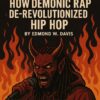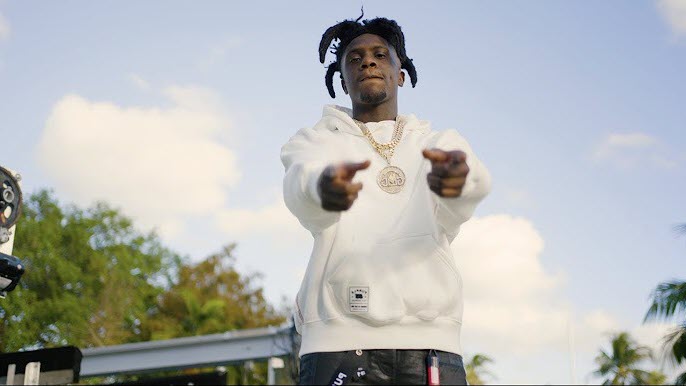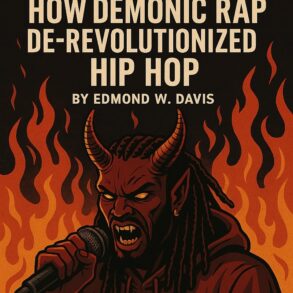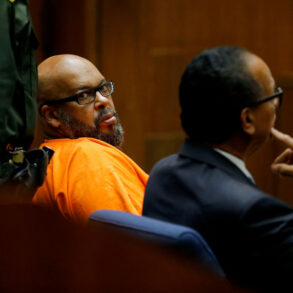Hip-hop has always been more than just music—it’s a global movement, a voice for the streets, and a mirror to the culture. Over the decades, rap has evolved from underground block parties to dominating charts and shaping the sound of generations. From gritty tales of survival to larger-than-life anthems of triumph, the genre continues to push boundaries and redefine what it means to be an artist. In this list, we dive into the Top 15 Most Popular Best Rap Songs of All Time—a carefully curated collection of tracks that changed the game, sparked movements, and left permanent marks on music history. These songs didn’t just top the charts; they became cultural milestones, echoing through headphones, car speakers, and stages around the world. Whether it’s the raw emotion of Tupac’s “Dear Mama,” the lyrical fire of Eminem’s “Lose Yourself,” or the swagger of Biggie’s “Juicy,” each track on this list represents a defining moment in hip-hop. Get ready to revisit the rhymes, the beats, and the legends that made history—because these aren’t just songs, they’re timeless anthems that continue to inspire, ignite, and influence. Let’s take it back to the bars that built a genre and the hits that made rap unstoppable.
1. “Juicy” – The Notorious B.I.G. (1994)
“Juicy” is more than a debut single—it’s a dream manifested in real time. When The Notorious B.I.G. introduced himself to the world in 1994, he didn’t just spit rhymes; he told a story that resonated far beyond the streets of Brooklyn. Built on a smooth, nostalgic sample of Mtume’s “Juicy Fruit,” the track is part autobiography, part celebration. Biggie raps about the harsh realities of growing up poor—living in the projects, facing doubt, and surviving off welfare—but he also beams with pride about how far he’s come. Every line is laced with gratitude, defiance, and undeniable swagger. “Juicy” became an anthem for anyone who ever dared to believe in themselves when no one else did. It immortalized Biggie not just as a rapper, but as a voice for the overlooked and underestimated. At a time when East Coast hip-hop was in the midst of a renaissance, “Juicy” became a defining track, helping shape the genre’s direction. Its legacy continues to inspire generations of artists and fans alike, proving that with talent, hustle, and heart, anything is possible. This was Biggie’s introduction—and what an entrance it was.
2. “Lose Yourself” – Eminem (2002)
“Lose Yourself” is a masterclass in seizing the moment. Released in 2002 for the 8 Mile soundtrack, the song blurs the line between fiction and real life, drawing on Eminem’s own struggles and ambitions to craft one of the most electrifying tracks in hip-hop history. From the opening piano chords to the pounding beat, everything about the song screams urgency. Eminem’s lyrics—sharp, relentless, and laser-focused—are a rallying cry for anyone chasing their dreams. He captures that split-second window where everything could change, and urges listeners to grab it with both hands: “You only get one shot, do not miss your chance to blow.” The song’s raw intensity and universal message struck a chord worldwide, earning it an Academy Award for Best Original Song—the first rap song to win that honor. “Lose Yourself” transcends genres, generations, and cultures. It’s motivational fuel, a performance booster, a pre-game anthem, and a personal mantra. More than 20 years later, its pulse still hits hard, and its message is just as relevant. It’s not just one of Eminem’s best—it’s one of hip-hop’s most enduring moments.
3. “Nuthin’ but a ‘G’ Thang” – Dr. Dre ft. Snoop Dogg (1992)
Released in 1992, “Nuthin’ but a ‘G’ Thang” didn’t just introduce the world to Snoop Doggy Dogg—it redefined the entire West Coast hip-hop sound. This track was the flagship single from Dr. Dre’s landmark album The Chronic, and it marked a seismic shift in the genre. Dre’s production, steeped in laid-back funk grooves and sun-soaked swagger, created a new blueprint: G-funk. And Snoop, with his smooth flow and effortless charisma, slid into the beat like he was born for it. The chemistry between Dre and Snoop was undeniable, and the result was a song that felt cool, confident, and totally fresh. “G’ Thang” wasn’t about anger or confrontation—it was about lifestyle, rhythm, and West Coast flavor. The music video, full of backyard parties and lowriders, added to the vibe and helped solidify the song as a cultural touchstone. It catapulted both artists into superstardom and helped bring gangsta rap to the mainstream without losing its authenticity. Even today, when that opening riff hits, you know what time it is—it’s a vibe that never fades.
4. “C.R.E.A.M.” – Wu-Tang Clan (1994)
“C.R.E.A.M.” is one of those rare tracks that feels like a cold, hard truth etched into vinyl. Released in 1994 on Enter the Wu-Tang (36 Chambers), it stands as one of the most iconic and sobering reflections of street life in hip-hop history. The acronym stands for “Cash Rules Everything Around Me,” and the song dives deep into the struggles of survival, poverty, and ambition. RZA’s production is haunting and stripped-down, built around a looping piano sample that sounds like something from a forgotten noir film. Over it, Raekwon and Inspectah Deck deliver vivid verses that chronicle their youth in Staten Island—a place where money ruled and hope often came second. There’s no glamorizing here, just stark realism wrapped in poetic grit. The chorus, delivered with ghostly precision, became an instant classic and a lasting mantra in hip-hop culture. “C.R.E.A.M.” doesn’t boast or brag—it reflects, it mourns, and it explains. In doing so, it transcended rap and became a social document, a timeless statement on the price of survival in a system that often leaves you with nothing but hustle and dreams.
5. “Empire State of Mind” – Jay-Z ft. Alicia Keys (2009)
“Empire State of Mind” is a soaring ode to New York City—its grit, its glamour, and its indomitable spirit. Released in 2009, the song pairs Jay-Z’s streetwise verses with Alicia Keys’ powerhouse vocals, creating an anthem that feels both intimate and epic. Jay-Z reflects on his journey from the tough streets of Brooklyn’s Marcy Projects to the pinnacle of fame, using his own life as a metaphor for the city’s promise and resilience. Alicia’s chorus elevates the song into something larger—a dream set against a skyline. With lines like “Concrete jungle where dreams are made of,” she captures the magic and madness of NYC in a way that resonates with anyone who’s ever walked its streets. More than a tribute, the song became the soundtrack of the city itself—blaring from taxis, sports arenas, and rooftop bars. It captures the hustle, the heartbreak, and the hope that define New York. “Empire State of Mind” isn’t just one of Jay-Z’s most iconic tracks; it’s a cultural touchstone that continues to inspire people chasing their own big city dreams.
6. “Fight the Power” – Public Enemy (1989)
When Public Enemy dropped “Fight the Power” in 1989, they weren’t just making music—they were issuing a challenge. Produced by The Bomb Squad and featured in Spike Lee’s Do the Right Thing, the song is a thunderous, unapologetic demand for justice, equality, and recognition. Chuck D’s voice commands attention—his verses call out racism, media hypocrisy, and the erasure of Black heroes, while Flavor Flav’s interjections add energy and urgency. The beat is chaotic and layered, reflecting the social unrest of the time, and it doesn’t let up for a second. “Fight the Power” is confrontational by design, meant to disrupt, to provoke thought, and to empower. It’s not background music—it’s a call to consciousness. From shouting out Rosa Parks to challenging the veneration of Elvis, the song breaks down cultural myths and replaces them with truth. More than three decades later, it remains one of the most powerful protest songs in American music. “Fight the Power” isn’t just part of hip-hop history—it’s a cornerstone of social activism through art.
7. “Straight Outta Compton” – N.W.A (1988)
“Straight Outta Compton” was a musical Molotov cocktail thrown into the mainstream in 1988. It wasn’t just a track—it was a manifesto. With blistering verses from Ice Cube, MC Ren, and Eazy-E, and menacing production from Dr. Dre, the song introduced the world to N.W.A and the raw reality of life in Compton, California. Ice Cube’s opening line—“Straight outta Compton, crazy motherf***er named Ice Cube”—hit like a sucker punch, and from there, the song didn’t let up. It was aggressive, unfiltered, and unapologetically Black. At a time when few dared to tell these stories, N.W.A brought the unvarnished truth to the forefront, exposing police brutality, systemic neglect, and urban decay. The controversy that followed only amplified its impact. It was banned from radio, yet it sold millions. It angered authority figures, but it empowered a generation. “Straight Outta Compton” didn’t just push boundaries—it redrew them. It helped birth gangsta rap, changed the perception of hip-hop, and solidified N.W.A’s place as one of the most influential groups in music history.
8. “Dear Mama” – 2Pac (1995)
“Dear Mama” is one of Tupac Shakur’s most heartfelt and human moments. Released in 1995, the song is a tender tribute to his mother, Afeni Shakur, honoring her sacrifices while acknowledging their complex relationship. Built around a soulful sample of The Spinners’ “Sadie,” the track sets a nostalgic tone that matches Tupac’s deeply personal lyrics. He raps about growing up in poverty, witnessing his mother’s struggles with addiction, and still recognizing her unwavering love and strength. It’s a love letter, but it’s also an apology—a moment of clarity from a man who lived fast but never forgot where he came from. At a time when gangsta rap was known for its aggression, “Dear Mama” stood out for its vulnerability. Tupac’s delivery is raw and reverent, making it one of the most moving songs in hip-hop history. It broke barriers, humanized a genre often misunderstood, and touched listeners far beyond the usual fan base. Whether it’s Mother’s Day or just a quiet moment of reflection, “Dear Mama” remains a timeless reminder of the power of gratitude and the depth of maternal love.
9. “HUMBLE.” – Kendrick Lamar (2017)
When Kendrick Lamar unleashed “HUMBLE.” in 2017, it wasn’t just a single—it was a statement. Riding a thunderous, stripped-down beat by Mike WiLL Made-It, Kendrick commands attention from the very first bar. The track is a masterclass in contradictions: bold yet self-aware, minimal yet explosive, lyrical yet blunt. Kendrick uses “HUMBLE.” to call out industry fakery, challenge rap egos, and reflect on his own place in the game—all while delivering one of the most infectious hooks of the decade. The music video, packed with religious iconography and striking visuals, only elevated the song’s impact, turning it into a cultural lightning rod. More than just a banger, “HUMBLE.” is layered with nuance, balancing braggadocio with calls for authenticity in both hip-hop and society at large. It’s this duality that defines Kendrick as an artist—unafraid to confront uncomfortable truths while remaining rooted in sharp wordplay and relentless rhythm. As the standout track from his Pulitzer Prize-winning album DAMN., “HUMBLE.” proved that Kendrick Lamar isn’t just a voice of his generation—he’s reshaping what the voice of a generation sounds like. It’s a sermon disguised as a smash hit, and its message still reverberates loudly today.
10. “Hotline Bling” – Drake (2015)
Released in 2015, “Hotline Bling” marked a pivotal moment in Drake’s career—one where vulnerability, style, and meme-worthiness collided to perfection. Built around a hypnotic sample of Timmy Thomas’ 1972 track “Why Can’t We Live Together,” the beat is sparse yet catchy, giving Drake the space to muse on a relationship that slipped through his fingers. The lyrics are soaked in nostalgia and jealousy as he reflects on a girl who’s moved on, exploring themes of emotional distance and personal evolution. But beneath the melancholy lies a danceable groove that caught fire across radio waves and social media. The accompanying video—with Drake’s now-iconic awkward dance moves and neon-lit rooms—launched a thousand memes, helping the track explode far beyond hip-hop circles. “Hotline Bling” blurred genre lines, blending rap, R&B, and pop into a sound that became Drake’s signature. It showed that emotional honesty could drive a global hit and that a heartbreak anthem didn’t have to sound sad. More than just a chart-topper, the song cemented Drake’s status as a cultural force capable of turning late-night introspection into a worldwide phenomenon.
11. “It Was a Good Day” – Ice Cube (1993)
Released in 1993, “It Was a Good Day” revealed a different side of Ice Cube—more reflective than riotous, more grateful than grim. Known for his fierce delivery and politically charged lyrics, Cube took a breath with this track to imagine a day of peace, joy, and normalcy in South Central Los Angeles. Over a smooth, soulful sample of The Isley Brothers’ “Footsteps in the Dark,” he recounts a rare day where everything goes right—no police harassment, no violence, just basketball, a good meal, and time with a lover. The song is cinematic, full of vivid snapshots that turn simple pleasures into small miracles. It resonated deeply because it highlighted how extraordinary a “normal” day could be in a world defined by struggle. The track struck a powerful balance between laid-back groove and quiet social commentary, offering both escapism and realism. “It Was a Good Day” remains a West Coast classic, often cited as one of the greatest rap songs of all time. It’s not just about nostalgia—it’s about hope, the possibility of peace, and the preciousness of moments we too often take for granted.
12. “Gold Digger” – Kanye West ft. Jamie Foxx (2005)
“Gold Digger,” released in 2005, showcases Kanye West’s genius for crafting songs that are equal parts catchy, clever, and controversial. Featuring Jamie Foxx channeling Ray Charles on a reimagined hook from “I Got a Woman,” the track is built on an irresistible sample that fuses old-school soul with Kanye’s razor-sharp production. Lyrically, Kanye walks the line between satire and storytelling, exploring the complex dynamics between love, money, and ambition with wit and swagger. Foxx’s chorus adds a nostalgic flair that perfectly balances Kanye’s biting verses. The result is a dancefloor-ready anthem that’s both a cultural critique and a pop phenomenon. “Gold Digger” dominated the charts and airwaves, becoming one of the most recognizable—and debated—songs of its era. Its impact went beyond music, sparking conversations about gender roles, relationships, and materialism. But more than anything, it proved Kanye could blend humor and depth in a way that made people move and think at the same time. It’s a song that doesn’t just get stuck in your head—it lodges in the culture. Nearly two decades later, “Gold Digger” remains one of Kanye West’s most defining and enduring hits.
13. “Ms. Jackson” – OutKast (2000)
“Ms. Jackson,” released in 2000, is OutKast’s tender apology wrapped in eccentric brilliance. At its heart, the track is a sincere message to the mother of an ex—specifically André 3000’s former partner, singer Erykah Badu. But beyond the personal origins, “Ms. Jackson” taps into universal themes of love, regret, and the messiness of relationships. Big Boi and André 3000 deliver verses filled with honesty and perspective, navigating the trials of co-parenting and breakups with grace and wit. The song’s haunting piano melody and quirky beat add a distinct flavor that only OutKast could create, blending hip-hop, soul, and funk into something timeless. The chorus—“I’m sorry, Ms. Jackson, I am for real”—is unforgettable, part remorseful confession, part catchy hook that took over the airwaves. What makes the song so enduring is its emotional nuance. It’s rare for a rap hit to dig this deep into personal conflict with such charm and vulnerability. “Ms. Jackson” wasn’t just a commercial success; it was a cultural moment that showed how layered, innovative, and emotionally resonant hip-hop could be. OutKast didn’t just break genre boundaries—they rewrote the rulebook.
14. “Stan” – Eminem ft. Dido (2000)
“Stan,” released in 2000, is a haunting psychological portrait that forever changed the landscape of narrative hip-hop. Eminem steps into the shoes of an obsessed fan named Stan, penning increasingly desperate letters to his idol. The verses spiral from admiration to delusion, culminating in a chilling and tragic climax. Dido’s ethereal chorus, sampled from her song “Thank You,” provides a stark contrast to the darkness of the verses, adding a haunting beauty that lingers long after the track ends. “Stan” is more than a story—it’s a cautionary tale about celebrity worship, mental health, and the dangers of fame’s one-way mirror. Eminem’s lyrical control is masterful; he inhabits both Stan and himself with unsettling authenticity, using subtle changes in tone and detail to ratchet up the tension. The song was critically acclaimed and sparked global conversations, ultimately leading to the term “stan” entering the lexicon as slang for an overly zealous fan. “Stan” remains one of Eminem’s most powerful songs—a blend of storytelling, performance, and commentary that stands as a benchmark for what hip-hop can achieve. It’s not just a song—it’s a modern tragedy in four acts.
15. “Sicko Mode” – Travis Scott ft. Drake (2018)
“Sicko Mode,” released in 2018, is a genre-defying spectacle that broke all the rules and rewrote the blueprint for modern rap hits. Clocking in at over five minutes and segmented into multiple distinct beat switches, the track is less a song and more an odyssey. It opens with Drake’s subdued intro before shifting gears into Travis Scott’s high-octane verses, weaving through a sonic maze of chopped-up samples, booming bass, and futuristic flair. Each transition feels like a new chapter, keeping listeners constantly off-balance and engaged. The production, handled by a powerhouse team including Tay Keith, Hit-Boy, and Mike Dean, is explosive and experimental, pushing the boundaries of mainstream hip-hop. Lyrically, it’s braggadocious and surreal, capturing the chaotic energy of a life lived in the spotlight. “Sicko Mode” dominated the charts, went viral, and became an anthem for a new generation of rap fans. It’s the kind of track that demands multiple listens to fully unpack its layers. More than just a hit, “Sicko Mode” is an experience—bold, unexpected, and unforgettable. It represents the future of hip-hop’s soundscape: sprawling, collaborative, and unapologetically maximalist.
This post was originally published on this site be sure to check out more of their content.








